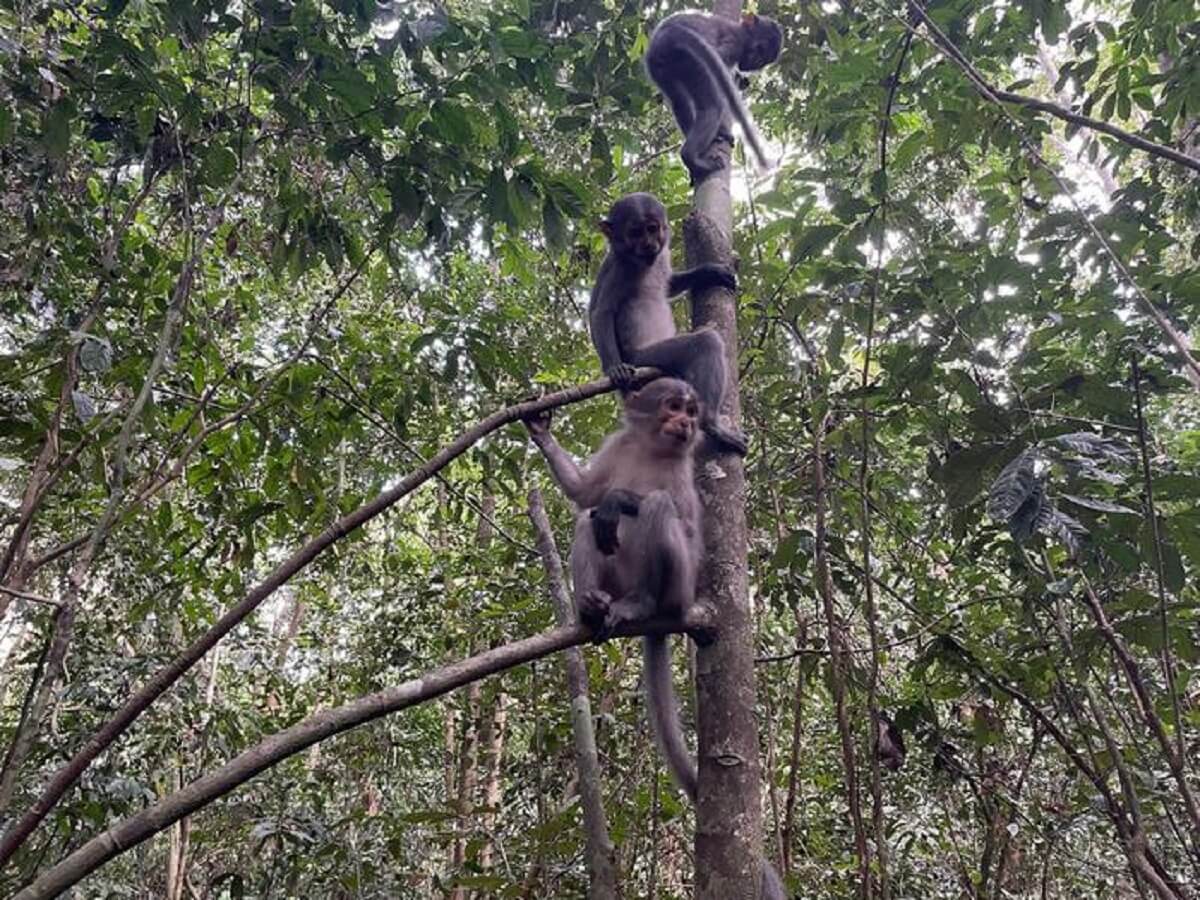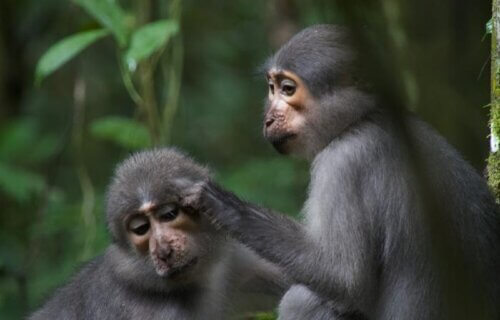HANOVER, N.H. — The flexible elbows and rotating shoulders that enable humans to reach high objects or throw a ball may have originally evolved as a braking mechanism for our primate ancestors descending from trees, according to a new study. Scientists from Dartmouth College used sports analysis and statistical software to examine videos and images of chimpanzees and small monkeys known as mangabeys climbing in the wild.
The study found that while climbing, both chimps and mangabeys keep their elbows and shoulders close to their bodies. However, when descending, chimps extend their arms above their heads to grasp branches, a posture similar to a human descending a ladder. This action helps counterbalance their greater weight as they move downward.

“Our study broaches the idea of downclimbing as an undervalued, yet incredibly important factor in the diverging anatomical differences between monkeys and apes that would eventually manifest in humans,” says Luke Fannin, the study’s lead author, in a media release. “Downclimbing represented such a significant physical challenge given the size of apes and early humans that their morphology would have responded through natural selection because of the risk of falls.”
The researchers also pointed out that the shoulders and elbows of chimps are “remarkably similar” to those of modern humans.
“Even after humans began walking upright, the ability to climb and descend trees remained crucial for survival. The basic architecture of our modern skeletons still reflects our ape ancestry,” says Fannin.
“Our study is important for tackling a theoretical problem with formal measurements of how wild primates climb up and down,” emphasizes Prof. Nathaniel Dominy, the Charles Hansen Professor of Anthropology and Fannin’s adviser. “We found important differences between monkeys and chimpanzees that may explain why the shoulders and elbows of apes evolved greater flexibility”
The study revealed that a chimp’s shoulder angle was 14 degrees greater during descent compared to ascent, and their arm extended outward at the elbow 34 degrees more when coming down than when going up. These findings shed light on how the nuances of locomotion could have influenced human evolution.
“Movement in humans is a masterpiece of evolutionary compromises. This increased range of motion that began in apes ended up being pretty good for us,” says co-author Mary Joy, who initially noticed the difference in the ways chimps and mangabeys descend.
The research is published in the journal Royal Society Open Science.
You might also be interested in:
- Evolutionary mismatch? Earth is full of really small and really large organisms
- Scientists discover why humans have larger brains than apes
- Early humans first walked upright — in trees
South West News Service writer Stephen Beech contributed to this report.

